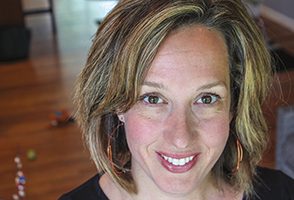'I'm Afraid There Has Been a Mistake'
January 01, 2020
Schools move to fully include students with emotional, intellectual and developmental disabilities and to right educational wrongs

Many students with disabilities remain segregated from their nondisabled peers, educated in separate schools, self-contained classes, resource rooms and pullout programs. Decades of research show that this segregation in the name of special education
is not as effective as inclusion when it comes to student academic, social and behavioral growth.
We’ve dedicated our careers to studying inclusive education and supporting schools to become more inclusive. We’ve met thousands
of students whose lives have been altered dramatically because educators created inclusive classrooms and schools.
To illustrate, we share three brief stories of students who were significantly impacted by widely differing special education
placements. Polly was educated only in segregated special education settings, while Alisha and Kavon moved from segregated settings to inclusive settings during their years in K-12 schooling. (The students were given pseudonyms in our research.)
Polly: Segregated education to what end?
Polly is a white, middle-class, 1st-grade student with a label of intellectual disability who was educated in a segregated classroom from ages 6 to 8 in suburban Rochester, N.Y.
Polly loved music and animals, but her delays made it difficult for her to communicate with others and to interact with peers or adults. She was unable to decode and perform basic math skills so her team believed she was best served in the segregated
special education program.
Polly and her classmates remained in this segregated program from primary school until they graduated high school, usually when they reached 21. Most then entered a sheltered workshop where they performed supported, menial tasks along
with other adults with disabilities, according to the special education administrator at Polly’s school.
Year after year in this segregated program, Polly and her classmates attended a functional skills class for several hours of
their school day. They packed fake travel bags, stuffed envelopes, folded clothes and baked cupcakes.
To maintain this segregated program, the school district assigned many financial resources and faculty. Yet none of these resources or
faculty were used to enable Polly to access the general education curriculum, classrooms or nondisabled peers. What might have happened if the district had used the same resources to include Polly and her class-mates?
Alisha: “Can
I be your reading buddy today?”
Alisha is a white, middle-class 4th grader who entered kindergarten with a label of multiple disabilities, including cognitive disability. Rather than attend her neighborhood school, she was placed
in a separate school and educated in a multiage classroom for students with disabilities, ages 6-11, in Sacramento, Calif.
She remained in this segregated setting from kindergarten to 3rd grade and, though her teacher was caring, Alisha
made almost no progress on academic skills, didn’t develop new social skills and didn’t cultivate meaningful friendships. She never was invited for play dates during these years and her mother, Jenna, explained “she was never part
of the school community.”
After four years of minimal academic progress and concern that Alisha wasn’t making friends, Jenna requested a new placement in the general education classroom in Alisha’s neighborhood school. She wanted Alisha to have access
to community, friendships and general education curriculum. Due to Jenna’s advocacy and in part to a change to inclusive-minded administrators, Alisha enrolled in her neighborhood elementary school.
At the beginning of the year, Alisha
was included, but the staff wasn’t sure what to do. They hadn’t included a student with significant disabilities before. With administrative support, her school team met with Alisha’s parents regularly to determine individualized
approaches to facilitate her inclusion.
The team quickly realized two key things: Alisha loves to listen to familiar stories and many of her peers enjoy reading to her. The team looked at her strengths and implemented a prereading strategy
in which one of Alisha’s peers would read her the book in advance so she would be prepared to engage during class reading time. After trying this strategy for a few weeks, Alisha’s teacher e-mailed her mother: “Yay! Alisha sat and
listened to the entire story of Mrs. Brown. She smiled at me while I read and had eye contact with me or the book for most of the story.”
According to the general education teacher, including Alisha benefited others in her class. In fact, “Alisha, can I be your reading buddy today?” was an often-heard question in her classroom.Many successes of this nature occurred in 4th grade. According to the general education teacher, including Alisha benefited others in her class. In fact, “Alisha, can I be your reading buddy today?” was an often-heard question in her classroom. Alisha became particularly close with a student named Nicholas. He was reading below grade level in the beginning of the year, but using the peer prereading strategy to support Alisha, Nicholas began reading her picture books. His reading fluency and confidence began to grow and by the end of the year, the teacher reported, Nicholas’s “attitude toward reading had greatly shifted.” He was reading Alisha chapter books while she listened intently.
New challenges continued to arise for Alisha’s school team, consisting of her special education teacher, general education teacher, occupational therapist, speech therapist and principal. These challenges largely related to helping her to participate in the academic curriculum. They explained it takes time, creativity and collaboration to continue devising meaningful ways for Alisha to participate. Her general education teacher said, “Our expectations for Alisha continue to grow and she continues to exceed them.”
Kavon: “I’m afraid there’s been a mistake.”
Kavon is an African-American student in Syracuse, N.Y., with a label of emotional disturbance, who from kindergarten through 4th grade had been educated solely in a segregated special education classroom with other students with challenging behavior.
Kavon was described as withdrawn and aggressive. He refused to do work, often yelling, “I hate this stupid class!” The special education teacher in the segregated classroom said, “Kavon was often restrained. Oftentimes he was very angry about school and how he felt about himself.” During his time in segregated special education, Kavon’s mother shared, “Every year the school said Kavon would be best served in the small special ed room. I asked, ‘How is his behavior going to improve if he spends all his time with other kids who also don’t behave?’”
Before the start of 5th grade, his school district adopted a more inclusive philosophy and dismantled its segregated classrooms. Kavon became part of a general education class and his special education services were brought to him. The principal explained their revised service delivery meant that special education teachers were co-teaching with general education teachers.
The first day of school in his new general education 5th grade class, Kavon’s teacher reported he was well-behaved, motivated and eager to participate. Yet at the end of the day, he sat at his desk and put his sweatshirt’s hood over his head. As all the other students lined up to go home, Kavon refused to get up and would not look at his teacher. She thought this was the type of refusal behavior listed on his IEP. She went up to him and asked what was wrong. His response surprised her: “I’m afraid there’s been a mistake.”
The teacher asked him what he meant. “I’ve never been in a class like this,” he replied. Kavon was afraid if he went home, the school would figure out the mistake that he had been placed in the wrong class and he’d “have to go back to the small class for the ‘stupid’ kids.” The teacher paused before explaining that the whole class, including Kavon, was going to work very hard this year, but that his classroom all year was “this room.”
Kavon’s special education teacher and general education teacher spent time each week planning together. It was the first time they had worked together so, according to the special education teacher, “[the co-teaching] was not always smooth as we were getting to know each other and our different styles.”
Their collaboration was sincere, but during Kavon’s 5th grade year, they were not the model of co-teaching. As the year went by, they tried more strategies and co-teaching approaches. And they began to give Kavon leadership roles — from small duties around the classroom to a nomination for the principal advisory council.
Kavon thrived. Revisiting his IEP late in the fall of 5th grade, several new descriptors were added: “He often sits in the car early for school. Doesn’t want to be late,” “has made many friends,” “is a leader” and “a stellar community member.” In the spring of 5th grade, Kavon was declassified. His co-teachers, the special education administrator and Kavon’s mother agreed he no longer qualified for special education.
Kavon’s general education teacher was clear that “Kavon still has behavioral challenges and difficult days … but his struggles and refusals are typical.” By the end of the year, his achievement on general education measures were well within the range of his classmates — the 55th percentile. Declassification was a dramatic shift for a student who had spent the first five years of his formal education in segregated special classes.
Yet decades of research have demonstrated that school behavior of African-American boys is seen and labeled in overly harsh and racialized ways. How was Kavon’s label of emotional disturbance impacted by that racialized context? Had he been placed in special education mistakenly?
We do not have enough data to address those important questions, but we do have data that when the end of the 5th-grade year arrived, Kavon’s general education teacher reflected this way: “The first day of school Kavon didn’t want to leave because he was sure the school had made a mistake and that we would send him back to the ‘stupid’ self-contained special ed class. The mistake was not this 5th-grade classroom. The mistake was the five years prior when we had kept him in the special education classroom.”
Present Change
Our current system continues to segregate students such as Polly, Alisha and Kavon, excluding them from access to inclusive academic, emotional and social experiences and relegating them to a second-class education. From an empirical, ethical and legal
standpoint, we believe we no longer can ask whether we should include students with disabilities, but instead ask, how can we do it well?
The key to this answer is what Kavon’s administrators and many other school leaders have committed
to do: Create an inclusive mission, engage in a collaborative process to realize it, design a service delivery model to support it, build instructional teams of educators to enact it and train staff in the necessary knowledge of inclusive practice
and philosophy.
For students like Polly, who have left school without opportunities for inclusion, hope for change is too late. But for many others, it is time we correct our educational mistakes and advocate for all students to belong in inclusive settings.
@julie_causton
About the Authors
Julie Causton is CEO of Inclusive Schooling in Manlius, N.Y.
Kate MacLeod is an assistant professor of inclusive special education at University of Maine Farmington.
George Theoharis is professor of educational leadership and inclusive elementary/early childhood education at Syracuse University.
Advertisement
Advertisement
Advertisement
Advertisement



